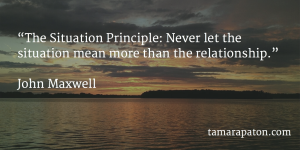

It’s tough being the new kid on the first day of school. You don’t know the inside jokes and you don’t know where to sit at lunch.
Fast forward forty years and it’s the same for a new director. Your colleagues exchange stories from summer vacations and pass notes at the back of the room. Even director orientation, with its firehose of acronyms, org charts and PowerPoint slides, can feel like a hazing ritual.
Most new directors dip their toe into early board meetings with a plan to listen. They may ask a few clarifying questions, but they are there to learn. And most boards support a new director’s desire to soak it all in.
After two or three meetings, however, colleagues often forget that the newbie is new. This represents a crucial opportunity for a new director to demonstrate his value. This is not a matter of trying harder, however, or speaking with gravitas. Instead, a new director must be thoughtful about the behaviours he exhibits. In particular, I’ve noticed five ways that a fresh-faced board member can contribute in a hurry.
Speak with confidence (that you may not have)
I’ve written previously about finding your voice as a director. It’s even more critical for a new director whose personal brand is a blank canvas. Our choice of words and the tone with which we deliver them define our credibility and relationships in those early days.
On one of my boards, I made the mistake of couching my early comments and questions. “Perhaps I missed this in the pre-read,” “I’m sure you’ve already considered this,” and “I could be way off base here, but” are self-limiting crutches that have no place in the boardroom. Researchers find that women who feel outnumbered on boards are particularly reliant on this “double voice discourse.”
Observe interpersonal dynamics
Understandably, it can take a new director a few years to truly understand a business. We are immediately capable, however, of observing relationships and behaviours. In your first board meeting’s in camera time, note how management reacted to directors. Appreciate the way two or three directors built on one another’s questions. If someone amplified or clarified one of your questions, thank them for their support. You may not have blinding insight into strategy yet, but your fresh eyes on people can make a positive difference on your first day.
Find your tribe
Board relationships can drive your success, particularly as a new director learning the lay of the land. In your first board meeting, identify one or two directors who welcome you with particular interest. Ask them about their early days on the board and seek their advice on a few questions. If they respond warmly, they may become valuable sources of encouragement and insight into your performance. Establishing a feedback loop early in your tenure will accelerate your development and improve your standing on the board.
Define your expertise
While you will never know more than the CEO about the organization, you were brought on board for a reason. You have something to offer, something that fills a gap. Perhaps you have 10 years’ experience in internal audit and the board is concerned about risk. Or your view on the company’s enterprise-wide system implementation is informed by a career in large corporate IT projects. You may even bring unique knowledge of a key customer demographic or geography that was previously lacking.
Whatever you are known for knowing, it is important to speak to those issues with confidence. And if you hesitate to share an idea, remember that someone once said, “Let’s make a film about a tornado full of sharks.” Surely your expertise rises above that modest standard.
Immerse yourself in the organization
As a new director with MEC, I committed to participating in an event hosted by every store in Ontario. I ran road races, attended a book signing, and tested out gear at a demo day. Before each board meeting, I would check out the latest merchandise at my local store and treat myself to a purchase. Doing so made it easier to understand management’s explanation of store inventory levels, fast moving product categories, and upcoming marketing campaigns.
In support of my work with the Meridian board, I renewed my mortgage via the call centre, rather than following my usual habit of walking into a branch. I sat with members at a local parade and listened to their stories of how our credit union was building resilience in their businesses. And I always stop into new branches that appear in my travels. The habits and insights we gain through this early field research will pay off for years to come.
Admittedly, you will have moments when you wonder why you signed up for this new gig. In Shoe Dog, Nike founder Phil Knight emphasizes the importance of connecting with your purpose, particularly amid uncertainty.
“Seek a calling. Even if you don’t know what that means, seek it. If you’re following your calling, the fatigue will be easier to bear, the disappointments will be fuel, the highs will be like nothing you’ve ever felt.”
The vast majority of corporate directors don’t do the work for the money. Instead, we see opportunities to change communities, acquire new skills, and contribute to something that didn’t exist previously. Your experience as a new director will be easier if you hold onto what originally drew you to board work and adopt a few winning strategies.
Question: What tips do you have for new directors?
Please share your response via Twitter, LinkedIn or e-mail.
Thank you for reading! If you found this post useful, please click the “like” button on LinkedIn and/or share it with others in your network. Doing so helps my work reach others and would mean so much to me.










